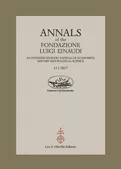This paper documents the ongoing construction of the Italian Historical
Taxpayers’ Database (IHTD), currently consisting of 1,593,563 micro-records of income declarations filed by Italian autonomous workers in 1889, 1922 and 1933. Such a database results from the digitisation of a so far overlooked source, the printed lists of taxpayers’ declarations for some categories of the Imposta di ricchezza mobile, the most important Italian direct tax on income until the early 1970s. To contribute to the ‘rediscovery’ of these sources (and Italian fiscal sources in general), the paper surveys the history of the taxpayers’ lists in post-unification Italy, as well as the ‘classic’ arguments against the reliability of fiscal sources, in the light of available evidence. This makes possible to discuss how, while inevitably affected by biases and limitations, these sources offer historians a new perspective on the incomes of important social groups, and do so with an unparalleled level of granularity in terms of activities, geography, and gender, contributing in this way to the history of inequality during the Fascist period, and potentially to the broader economic history of post-unification Italy.



